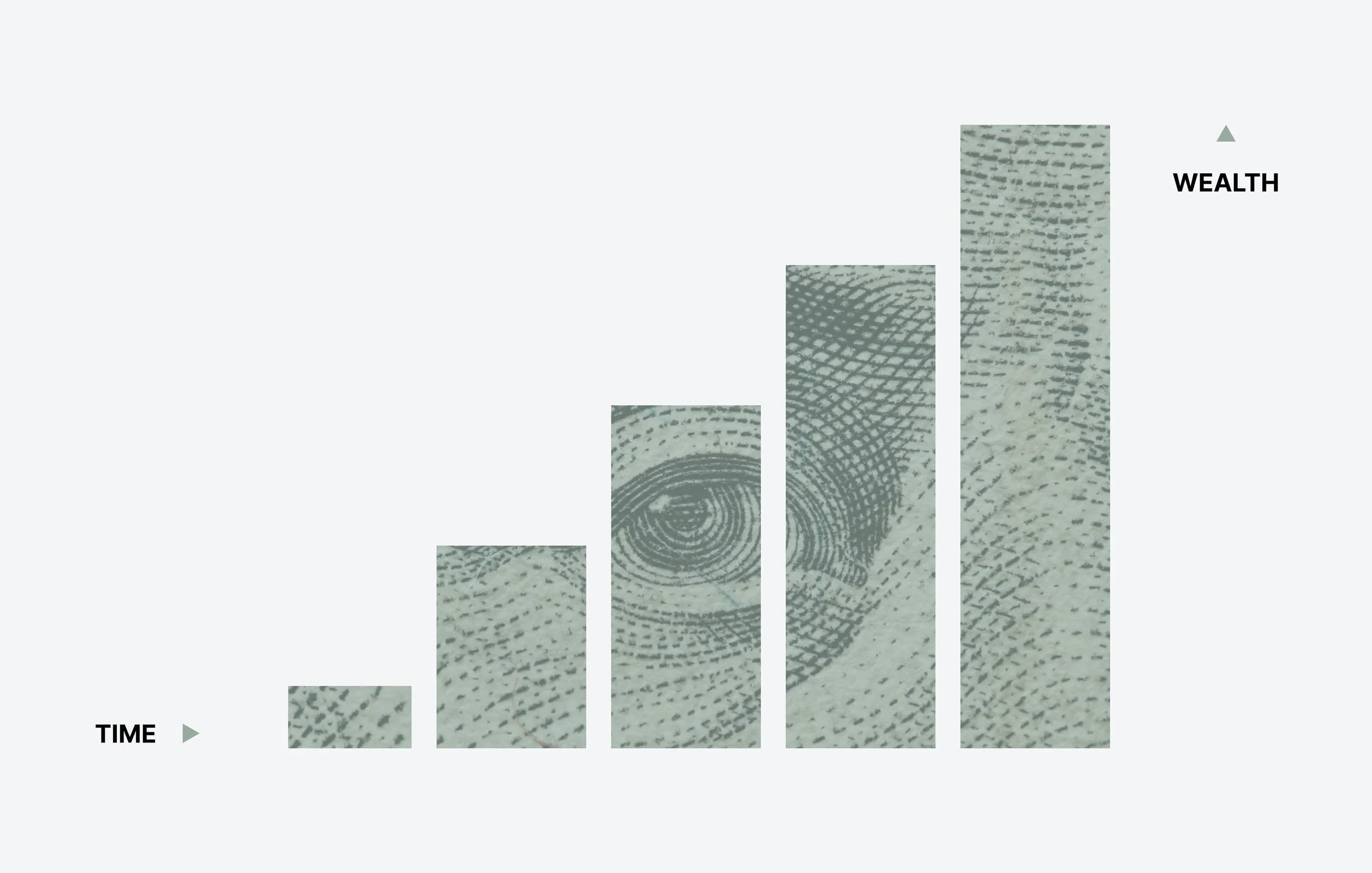Why You Actually Need Less to Retire Early (Than in 30 Years from Now)
August 2, 2021
The Wealth Planner
The only personal finance tool on the market that’s designed to transform your plan into a path to financial independence.
Get The Planner
Join 200,000 other people interested in money, power, culture, and class.
Subscribe Now
Biggest Finance Newsletter for Women
More than 10 million downloads and new episodes every Wednesday.
The Money with Katie Show
Recommended Posts

I don’t want to bury the lede: The point of this article is that inflation can suck the life out of our money.
So often, we talk about early retirement and traditional retirement savings in the same breath, as if they’re an apples to apples comparison:
“I can retire as soon as I have $1.5M invested!” we say, with good intentions, meaning it’s a number and not an age that matters.
And that may be true, if we have $1.5M in the next 5-10 years.
Because in 5-10 years, inflation won’t have had too much of a chance to erode the value of those dollars yet.
But the second we start talking about timelines that are 20, 30, and sometimes even 40 years away, we’re in an entirely different ball game where the rules are new and the scoring system has changed entirely.
Time is the key difference between early and traditional retirement, and time matters insofar as it tells us how many years of inflation we’re up against.
The shorter your timeline (read: the faster you can get your number), the less you have to stress about inflation eating your FI number alive.
Ready for an overly simplified explanation? Inflation is what happens when the supply of money increases but the supply of things to buy (and consumer demand for those things) doesn’t, so the purchasing power of each dollar goes down—supply & demand from Econ 101 (a class in which I got a B, for level-setting).
The “average” increase in prices per year according to the Consumer Price Index is 3%, but some argue that that number is artificially low because it doesn’t represent the price of things that people are actually buying or represent the actual increase in the amount of money being printed each year by our friends at the Fed.
But for the purposes of today’s exercise, we’ll use 3% to avoid the naysayers who claim I’m being too liberal with my inflation calculations (because while we’ve seen high inflation in the last 12 months, my crystal ball is on the fritz and it’s hard to predict how it’ll change in the future).
The question we want to ask is, What do I really mean by $1.5M?
I picked $1.5M pretty arbitrarily; it’s a number I see a lot used for both early retirement and traditional retirement alike (so it felt apropos).
Most likely, you mean you want the purchasing power equivalent of $1.5M today when you retire, as if you were 65 today and had $1.5M. We have to adjust for the amount of time (and inflation) that happens between now and then, whenever “then” is.
That’s partially why early retirement is appealing: The faster you can reach it, the less inflation you have to calculate for.
It boils down to this: $1.5M in 40 years from now will not be worth what $1.5M (read: have the purchasing power) is today.
For an easier way to think about this, imagine someone 40 years ago who had $1.5M back then—back when gas was 25 cents and you could get a cheeseburger for 50 cents. Your $1.5 million meant something very different in 1982 than it does in 2022.
Let’s say you’re 30 years old today and planning to retire when you’re 65
If you want the equivalent of $1.5M for retirement at 65 (in 35 years from now) and we assume inflation increases by 3% every year (again, potentially a low estimate), you’d need:
$4,097,857.
In 35 years, $4.1M will have the purchasing power that $1.5M has today.
Is my point to shit on traditional retirement? Not at all.
Does this mean you can’t calculate your traditional retirement number with some degree of accuracy? No, not necessarily.
It just means that calculating 2056 money using 2021 dollars is just about as useful as calculating 2021 money using 1986 dollars—not very useful.
But there’s good news, too
35 years of time won’t just bring inflation. It’ll bring beautiful compound interest, too.
That means that—although you’ll definitely need to be saving and investing more than you might think—you’ll have plenty of time for that snowball to get bigger.
You’d have to invest $30,000 per year to have around $4M after 35 years, which sounds daunting as hell… until you remember that $30,000 today is not the same thing as $30,000 in 20 years from now (assumes a 7% average return). It’s likely a lot harder to save $30,000 today than it will be in the future—the positive side of inflation.
Looking for something?
Search all how-to, essays, and podcast episodes.
Explore
While I love diving into investing- and tax law-related data, I am not a financial professional. This is not financial advice, investing advice, or tax advice. The information on this website is for informational and recreational purposes only. Investment products discussed (ETFs, index funds, etc.) are for illustrative purposes only. It is not a recommendation to buy, sell, or otherwise transact in any of the products mentioned. Do your own due diligence. Past performance does not guarantee future returns.
Money with Katie, LLC.
Terms & Conditions | Privacy Policy
This Site Was Built by Brand Good Time